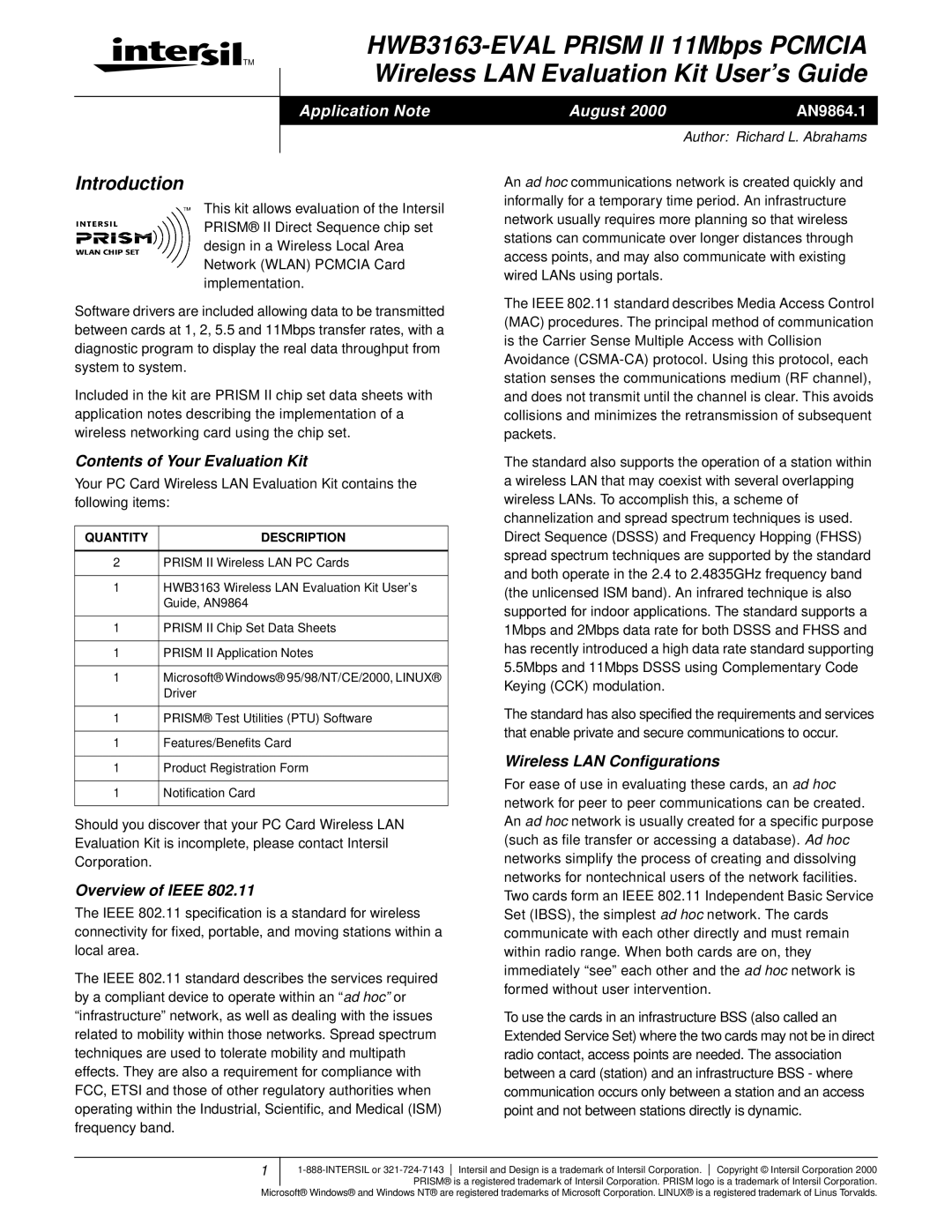HWB3163 specifications
The NDC comm HWB3163 is a cutting-edge wireless broadband device designed to enhance connectivity in both enterprise and residential environments. This powerful hardware bridges the gap between high-speed internet access and the need for reliable, uninterrupted service across multiple devices.One of the main features of the HWB3163 is its advanced MIMO (Multiple Input, Multiple Output) technology. This feature boosts the device's ability to manage multiple data streams simultaneously, resulting in increased throughput and improved performance. MIMO significantly enhances the connection quality, particularly in environments with multiple users or devices, making it ideal for both home and office setups.
The HWB3163 also incorporates the latest Wi-Fi 6 (802.11ax) technology, which is designed to deliver faster speeds, higher capacity, and improved performance in congested areas. Wi-Fi 6 enhances the user experience by supporting more simultaneous connections and minimizing latency. This is essential for environments where multiple devices are connected, such as smart homes or busy workplaces.
Another noteworthy characteristic of the NDC comm HWB3163 is its comprehensive security features. The device includes advanced encryption protocols such as WPA3, ensuring that users' data remains secure while being transmitted over the network. This added layer of security is crucial for protecting sensitive information, particularly in business settings where data integrity is paramount.
In addition to its robust technical specifications, the HWB3163 is designed with user-friendliness in mind. The intuitive web-based interface allows for easy setup and management, making it accessible even for those with minimal technical expertise. The device supports remote management, allowing users to monitor performance and troubleshoot issues from anywhere.
The NDC comm HWB3163 is equipped with multiple Ethernet ports, allowing for easy wired connections to devices such as computers, printers, and smart TVs. This versatility ensures that users can benefit from both wired and wireless connectivity, optimizing their network capabilities.
In conclusion, the NDC comm HWB3163 is a sophisticated wireless broadband solution that combines advanced technologies and user-friendly features. With its MIMO technology, Wi-Fi 6 support, robust security measures, and intuitive management options, it stands out as a versatile choice for users seeking reliable and high-speed internet connectivity. Whether for home use or in a business environment, the HWB3163 meets the demands of modern internet usage, ensuring that users stay connected and productive.

